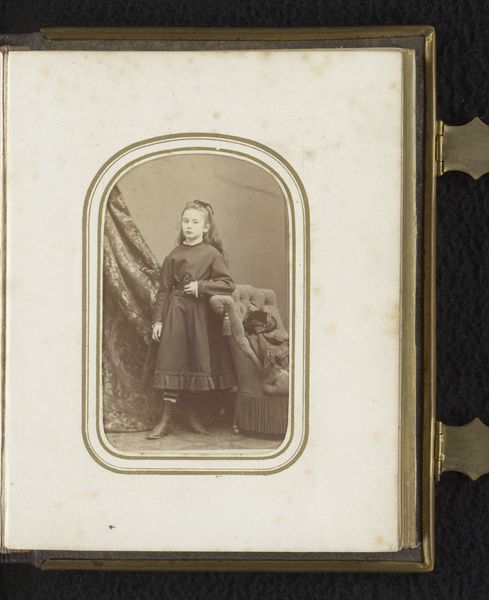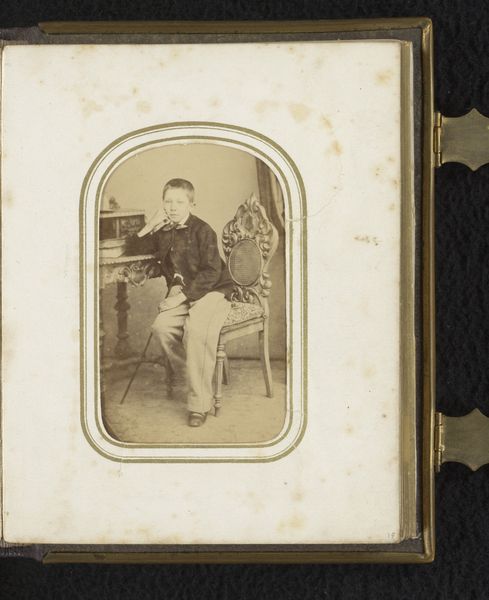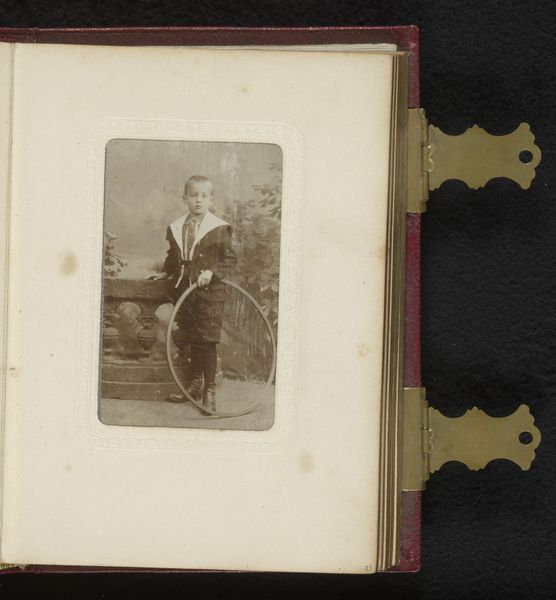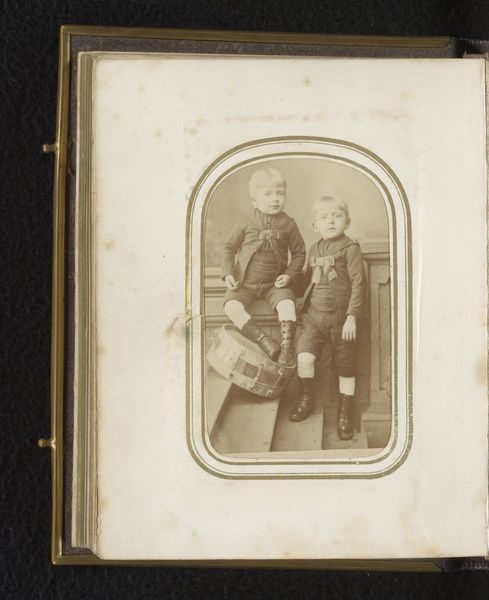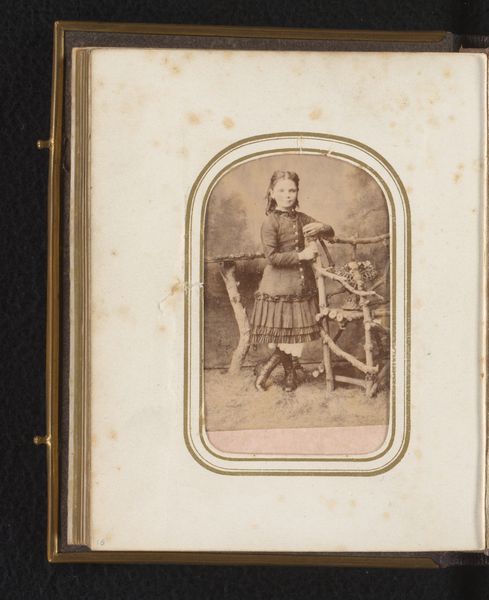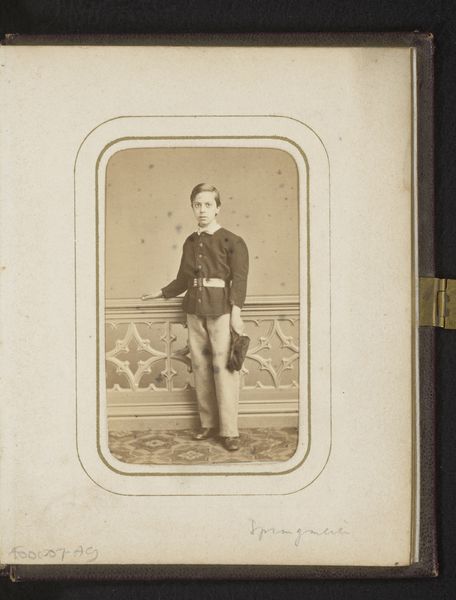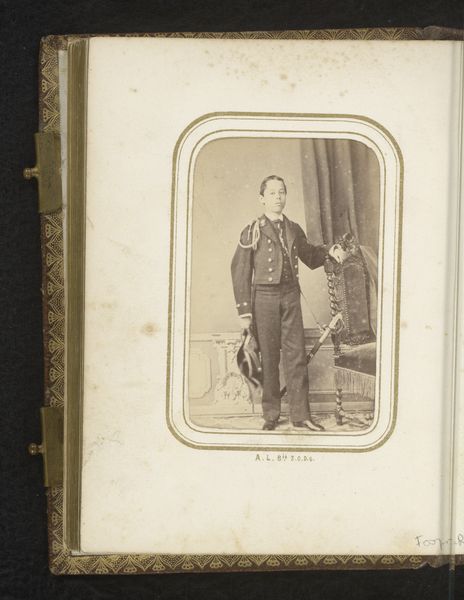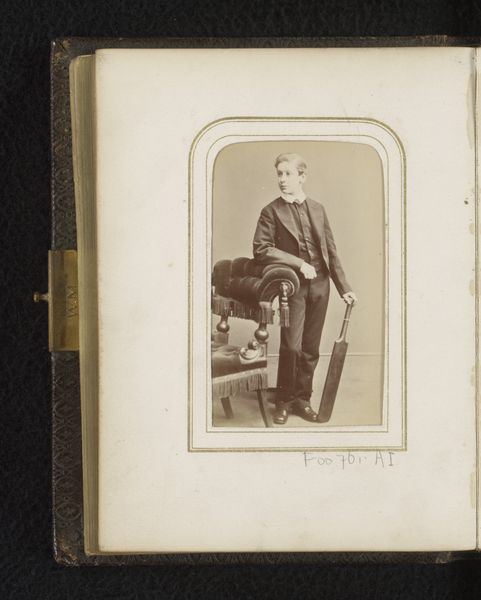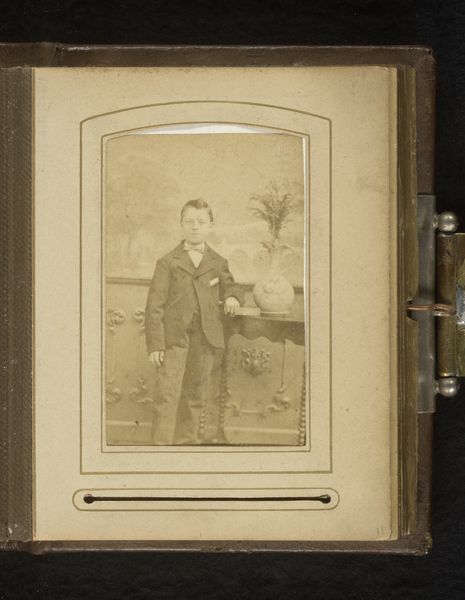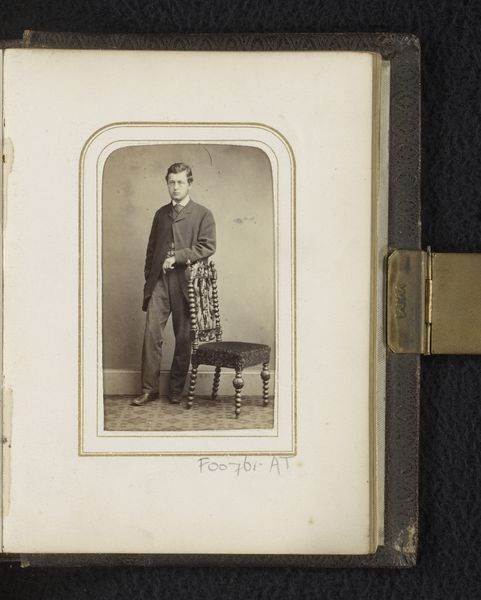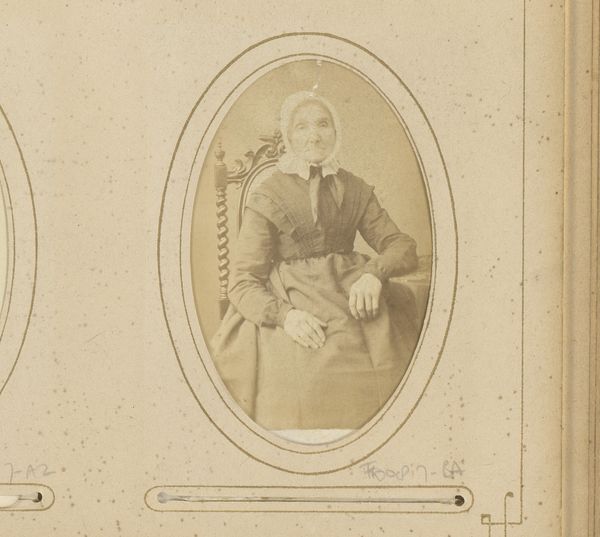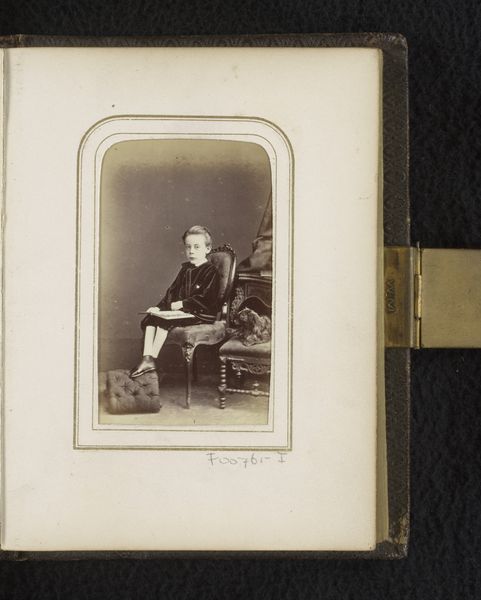
photography, gelatin-silver-print
#
portrait
#
photography
#
coloured pencil
#
gelatin-silver-print
#
genre-painting
#
realism
Dimensions: height 105 mm, width 64 mm
Copyright: Rijks Museum: Open Domain
Editor: So this is "Portrait of a Boy" by Hermanus Jodocus Weesing, a gelatin silver print dating between 1865 and 1900. It's quite a formal image, but something about his stance seems almost…uncomfortable? What do you see in this piece? Curator: What strikes me is the social context it represents. Think about it: photography becoming more accessible, yet still carrying a weight of social expectation. A studio portrait like this would have been a carefully constructed presentation of status and respectability. The boy’s clothes, the prop—the chair—all point to aspirations. How does the notion of “performance” play into your understanding of the image? Editor: Performance… That's interesting! It's not just a record of the boy's appearance but also his family presenting themselves in a certain way. So even the seemingly casual pose is intentional. Curator: Precisely. The rise of photography in the 19th century allowed a broader segment of society to participate in visual representation, shaping public image and ideas of identity. It was a tool but also a social stage. Consider how this image might have been displayed – how its very materiality shapes its meaning. Where would this object live? What are the institutional settings which support this kind of work? Editor: I hadn't thought about its life *after* the photo was taken. Perhaps in a family album, a very intimate audience versus, say, a public gallery today? The meaning shifts completely based on its display. Curator: Exactly. And who is missing in this photo, think of women or people of color and their opportunities to partake of this privilege. Also, that awareness helps us decode its message today, doesn't it? Editor: It really does. Looking at it as more than just a simple portrait makes it so much more fascinating! Curator: I agree. By understanding the socio-historical forces at play, we can appreciate its role within visual culture. It’s a good lesson.
Comments
No comments
Be the first to comment and join the conversation on the ultimate creative platform.
